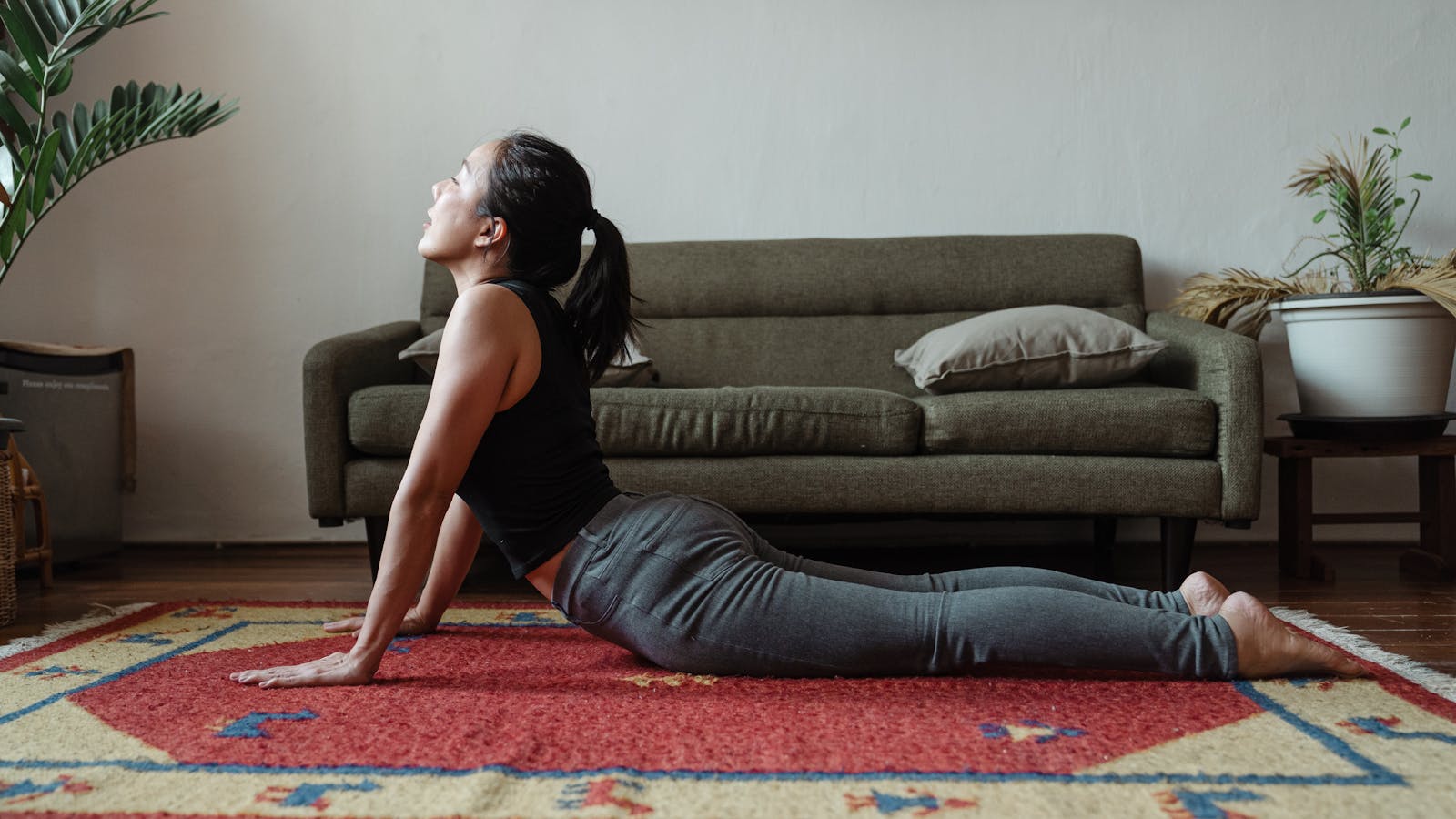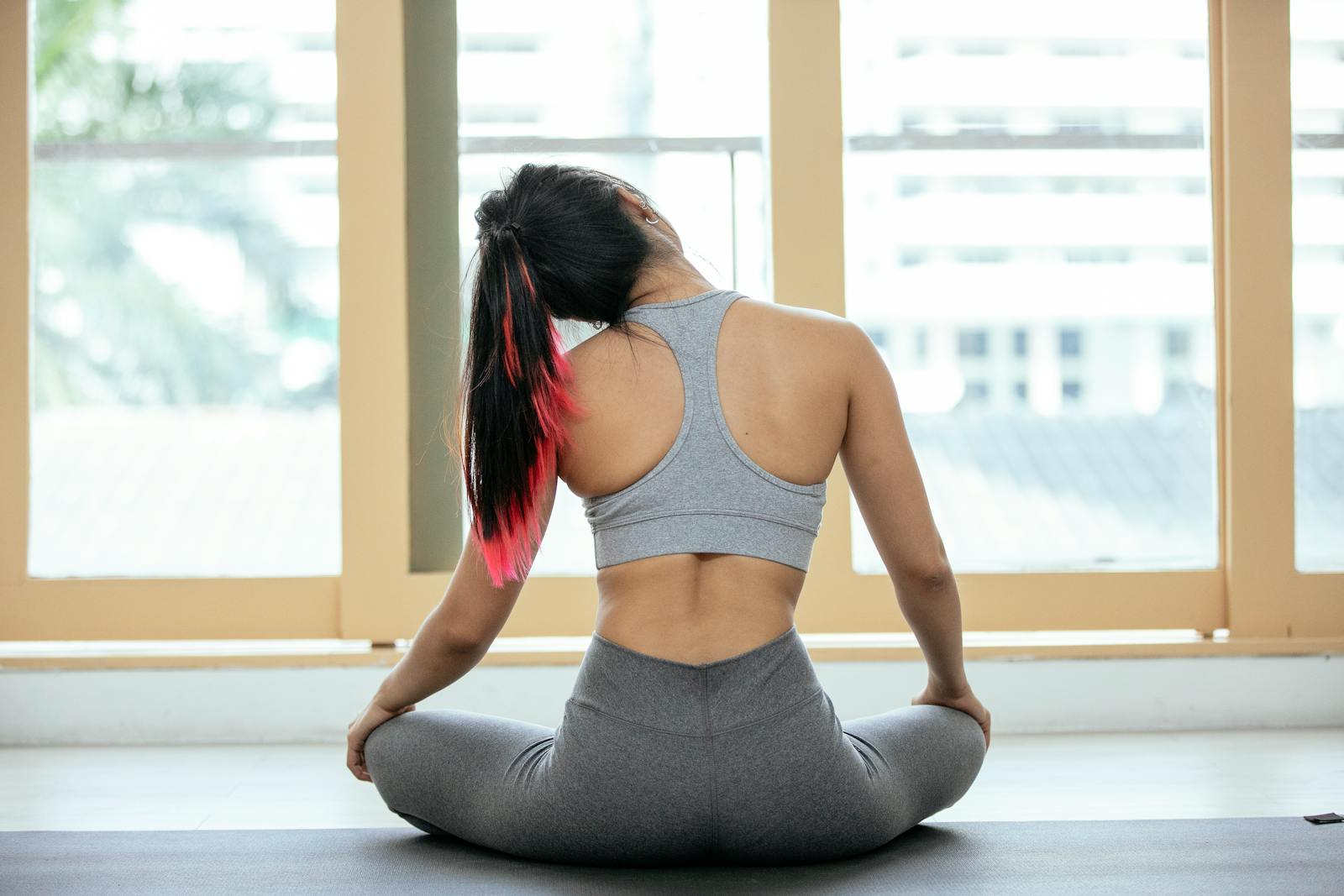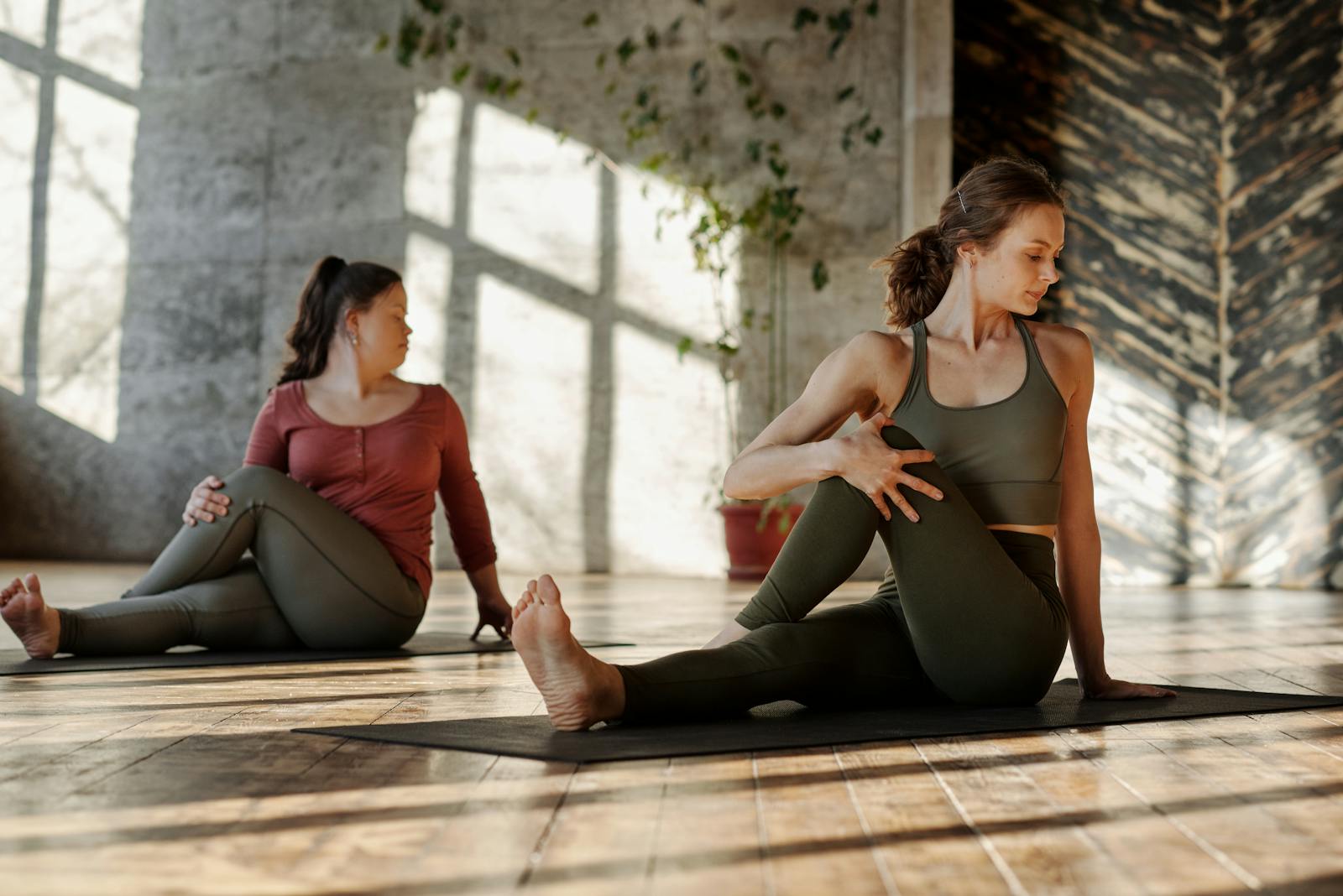In our increasingly digital age, neck pain and discomfort are all too common, often stemming from poor posture and extended screen time. Regular neck exercises can be a powerful tool in combating these issues, offering potential improvements in flexibility, strength, and overall neck health. However, the benefits and techniques of these exercises are not as widely understood as they should be. Let’s explore this further, to better comprehend the importance of neck exercises and to discover how they might enhance our daily routine and overall well-being.
Understanding Neck Anatomy
To fully comprehend the impact and benefits of neck exercises, it is essential to grasp the complex intricacies of the neck anatomy, a remarkable fusion of muscular and skeletal structures that enable essential movements and functions. The Neck Anatomy Basics are composed of distinct yet interconnected components, namely the cervical spine structure, muscles, ligaments, and nerves.
The cervical spine structure, comprising seven vertebrae (C1-C7), acts as the protective conduit for the spinal cord and serves as the pivotal axis for the neck’s vast range of motion. This structure is designed ingeniously to balance the stability needed for weight-bearing with the mobility required for diverse movements.
The muscles and ligaments provide strength, support, and flexibility. The sternocleidomastoid and trapezius, for instance, play a vital role in neck rotation and flexion. The intricate network of nerves in the neck, emanating from the spinal cord, controls sensory and motor functions, thereby influencing everything from muscle movement to sensation in the arms and hands.
In essence, gaining a solid understanding of the neck anatomy, especially the cervical spine structure, is a prerequisite for appreciating the profound effects of neck exercises. This knowledge foundation aids in devising effective, safe exercise strategies that can greatly enhance neck function and health.
Importance of Regular Neck Exercises
Cultivating a regular regimen of neck exercises is vital in maintaining excellent neck health, mobility, and strength. The importance of these exercises cannot be overstated as they not only provide relief from discomfort but also assist in preventing future neck issues.
For best results, the appropriate Neck Exercise Equipment should be utilized. This equipment ranges from resistance bands to neck braces, each designed to serve a specific purpose in strengthening and stretching neck muscles. A well-chosen piece of equipment can greatly enhance the effectiveness of the workout, ensuring maximum benefit is derived.
As important as the equipment is, equally significant is the Neck Exercise Frequency. A common misconception is that these exercises need to be performed daily. However, research suggests that a frequency of 2-3 times per week is sufficient for maintaining good neck health. Over-exercising can lead to strain and potentially exacerbate existing problems. It’s crucial to listen to your body and adjust the frequency accordingly.
Common Causes of Neck Pain
While maintaining a regular regimen of neck exercises and utilizing appropriate equipment can greatly enhance neck health, it’s equally important to understand the common causes of neck pain. One leading cause is poor posture, especially during prolonged periods of sitting or standing. This strains the muscles and ligaments in the neck, leading to discomfort or pain.
Another common cause is whiplash, a neck injury due to forceful, rapid back-and-forth movement of the neck, often as a result of a vehicle accident. Degenerative disc disease, a condition where the discs in your neck degenerate over time, can also lead to neck pain.
To accurately identify the cause of neck pain, a thorough Neck Pain Diagnosis is necessary. This usually involves a physical examination and potentially additional diagnostic tests such as X-rays or MRIs. Once the cause is identified, appropriate Pain Management Techniques can be employed. These could range from medication and physical therapy to lifestyle changes and, in severe cases, surgery.
Understanding these common causes of neck pain can guide individuals in taking preventative measures and seeking timely treatment, thereby improving their neck health and overall quality of life.
Safety Precautions for Neck Exercises
Implementing safety precautions during neck exercises is of utmost importance to prevent exacerbation of existing neck pain or the onset of new injuries. It’s vital to understand that the neck, with its complex structure and range of motion, is susceptible to strains and sprains that can lead to prolonged discomfort if not addressed appropriately.
Firstly, make sure that you use exercise equipment correctly. Equipment such as resistance bands, exercise balls, and neck harnesses can be effective tools for strengthening the neck muscles. However, improper usage can lead to further injury. Always follow the manufacturer’s instructions and if possible, seek guidance from a fitness professional.
Secondly, remember that neck exercises should not cause pain. If they do, stop immediately. It’s advisable to start slowly, with gentle movements, gradually increasing intensity over time. Never force a movement and be mindful of your body’s limitations.
Lastly, consider the role of these exercises in injury recovery. If you have a pre-existing neck condition, consult with a healthcare professional before beginning any exercise regimen. They will be able to guide you on the appropriate exercises and the proper technique to aid recovery and prevent further injury. Remember, safety should always be the priority when undertaking neck exercises.
Easy Neck Stretches for Beginners
For those new to exercising their neck muscles, there are a number of simple yet effective stretches to begin with that can help promote flexibility and strength. The first stretch, known as the neck side stretch, requires no equipment and can be performed anywhere. This stretch targets the side neck muscles, promoting flexibility and reducing tension.
However, for a more structured regimen, it’s advisable to invest in Neck Stretches Equipment. These tools, such as resistance bands or neck stretchers, can provide additional support and increase the effectiveness of the stretches. Remember to always start with light resistance and gradually increase as your neck strength improves.
Office Chair Stretches are another excellent option for beginners. These can be done right at your desk, making them perfect for those who spend long hours working on a computer. Simple movements like neck rolls or gently tilting your head from side to side can alleviate stiffness and improve mobility.
Regardless of your preference, consistency is key. Regular practice of these easy neck stretches will result in improved flexibility and strength in your neck muscles, setting a solid foundation for more advanced exercises in the future.
Advanced Exercises for Neck Strength
Now that we’ve covered beginner-friendly neck stretches, let’s focus on advanced exercises designed to strengthen the neck. This section will explore various techniques, all aimed at building neck strength, and the associated benefits. A strong neck is not only vital for good posture, but also plays a significant role in preventing injuries.
Neck Strengthening Techniques
Mastering advanced neck strengthening techniques can greatly improve your neck’s resilience and flexibility, reducing the risk of injury and discomfort. Incorporating neck massage benefits into your routine can enhance these techniques, providing relief and promoting muscle recovery. This practice stimulates blood circulation in the neck area, alleviates tension and aids in maintaining flexibility.
Pillow selection impact should not be overlooked in neck strengthening techniques. The correct pillow can provide the necessary support to your neck, reducing the strain on your muscles as you sleep. A pillow that’s too high or too low can lead to neck pain and stiffness, undermining the benefits of your exercises. Selecting a pillow that fits your sleeping position and provides adequate support is essential for maintaining neck strength.
Benefits of Strong Neck
A strong neck, fortified through advanced exercises, provides numerous benefits, including enhanced posture, improved athletic performance, and a lower risk of injury. This strength is not only important for athletes but also for individuals in their daily life.
- Enhanced Posture: A robust neck supports the head better, improving overall body posture.
- Improved Athletic Performance: Many sports require powerful neck muscles for best performance.
- Reduced Injury Risk: Strengthening the neck muscles can help prevent injuries like whiplash, and aid in whiplash recovery.
- Neck Aesthetics: A well-toned neck contributes to an overall fit appearance.
Yoga Poses for Neck Flexibility
Turning our attention towards the practice of yoga, we will explore its potential to increase neck flexibility. This section will cover beneficial yoga neck stretches that can be incorporated into your daily routine. Additionally, we will provide essential safety tips to guarantee these exercises are performed correctly to prevent injury and maximize benefits.
Beneficial Yoga Neck Stretches
Regularly incorporating beneficial yoga neck stretches into your routine can greatly enhance neck flexibility and reduce discomfort or tension. These exercises, often overlooked in comparison to neck massages impact or chiropractic treatments relevance, offer unique benefits:
- Neck Rolls: This stretch helps to ease tension in the neck, shoulders, and upper back.
- Seated Heart Opener: An effective stretch for improving posture and relieving neck strain.
- Extended Puppy Pose: This pose helps to lengthen the spine, relieving tension in the neck and shoulders.
- Child’s Pose: This gentle restorative pose helps to relax the neck muscles.
Safety Tips for Practice
While practicing yoga poses for neck flexibility can offer numerous benefits, following specific safety precautions is important to guarantee effectiveness and prevent potential injuries. When selecting equipment, it’s recommended to use quality yoga mats and props that provide adequate support and reduce the risk of slipping. Exercise duration is another key element to keep in mind. Beginners should start with short duration poses, gradually increasing the time as their flexibility improves. It’s vital to listen to your body and not push beyond your comfort zone. Incorrect posture or excessive strain can lead to injuries. Always warm up before starting the exercises and cool down afterward. Remember, consistency and safety should always take precedence over intensity.
How to Incorporate Neck Exercises Into Your Routine
Integrating neck exercises into your daily routine can be accomplished with a few simple strategies, which can contribute greatly to improved posture, reduced tension, and overall neck health. For individuals grappling with ‘Desk Job Dilemmas’ and seeking ‘Tech Neck Solutions’, incorporating neck exercises into your routine can make a significant difference.
Here are four strategies to help you seamlessly incorporate neck exercises into your routine:
- Morning Rituals: Start your day with a simple neck stretching routine. This can be as simple as tilting your head from side-to-side or doing simple neck rolls.
- Break-Time Neck Stretches: Take advantage of your breaks at work to do quick neck exercises. This not only helps alleviate neck tension but also promotes better posture.
- Tech Time-Outs: Use the time spent on your phone or computer as a reminder to engage in neck exercises. Every 30 minutes, take a break to stretch your neck and relieve tension.
- Evening Wind-Down: Before bedtime, engage in a more extensive neck exercise routine. This helps relax the muscles and promotes better sleep.
Adopting these strategies can help maintain neck health, reduce discomfort, and improve your overall wellbeing.

The Role of Posture in Neck Health
Undoubtedly, maintaining an upright and balanced posture plays a pivotal role in preserving neck health and mitigating discomfort. A key concept in understanding this phenomenon is Posture Psychology, which explores the link between our physical positioning and mental well-being. It posits that good posture can contribute to a positive mindset, reduce stress, and indirectly promote neck health.
The advent of technology has greatly impacted our posture. A new term, ‘Tech Neck’, has been coined to describe the strain on neck muscles due to the prolonged use of gadgets. This posture, characterized by a forward head and rounded shoulders, can lead to chronic neck pain and stiffness. Hence, Tech Neck Prevention constitutes an essential part of maintaining neck health.
To prevent Tech Neck, it is essential to be mindful of our posture while using devices. The screen should be at eye level, and breaks should be taken every 20-30 minutes to stretch and reset posture. Additionally, regular neck exercises can strengthen neck muscles, making it easier to maintain an upright posture. Remember, a little attention to posture today can prevent significant neck health issues in the future.
The Impact of Neck Exercises on Overall Health
The implementation of neck exercises can have a profound impact on overall health by enhancing posture, reducing stress, and improving circulation. Regularly practicing these exercises can correct misalignment, promoting a healthier body frame and reducing the likelihood of injuries. Moreover, such workouts can aid in stress management and stimulate blood flow, thereby contributing to better physical wellbeing.
Enhancing Posture Through Exercises
Incorporating neck exercises into your daily routine can greatly enhance your posture, thereby positively impacting your overall health. A healthy posture is not only aesthetically pleasing but also plays an essential role in preventing common musculoskeletal disorders.
To further improve your posture, consider:
- Investing in posture clothing: These garments are designed to help re-align your spine and promote better posture.
- Using ergonomic furniture: Chairs and desks designed with ergonomics in mind can protect your neck from strain.
- Regularly stretching: This can help maintain flexibility in your neck, allowing better posture.
- Strengthening exercises: These can build muscles in your neck, providing better support for your head.
Neck Workouts and Stress
Therefore, maintaining an upright posture is certainly beneficial, it is equally important to note that regular neck exercises can provide a significant counterbalance to the stress we often carry in our muscles, contributing to our overall health. The key relationship between neck workouts and stress is undeniable. Tension relief exercises, particularly those targeting the neck, are instrumental in stress management. They play a substantial role in relaxing the muscles, reducing strain, and promoting overall wellbeing. By regularly performing these exercises, the accumulated tension in the neck can be released, mitigating the effects of stress. This not only alleviates physical discomfort but also fosters mental peace, enhancing our capacity to cope with daily challenges. Incorporating neck exercises into our routine is a proactive measure towards maintaining good health.
Improving Circulation: Neck Exercises
Beyond stress management, neck exercises also play an important role in improving blood circulation, thereby profoundly impacting overall health. When performed consistently, these exercises can enhance cervical vertebrae health and greatly boost blood flow to the brain. This is essential since the brain relies on a constant supply of oxygen and nutrients to function at its best.
Here are four key neck exercises that can be performed:
1. Neck tilts: This helps in stretching and strengthening the neck muscles.
2. Neck rotations: These improve flexibility and circulation.
3. Neck stretches: These exercises ease tension and enhance cervical vertebrae health.
4. Neck massage: Apart from its relaxing benefits, it also improves blood flow, reinforcing the neck massage benefits.
Incorporating these exercises into your routine can result in improved health and wellbeing.
Personal Success Stories: Neck Exercises Testimonials
Exploring the domain of personal testimonials, numerous individuals have reported substantial improvements in their neck strength and flexibility following a consistent regimen of neck exercises. Their recovery journeys have been marked by triumphs over discomfort and pain, and a regained sense of normalcy in their daily lives.
Consider the testimony of 42-year-old software engineer, Mark, who battled chronic neck stiffness due to extended hours at his computer. For him, exercise consistency was key. A daily routine of neck stretches and strengthening exercises significantly reduced his discomfort and increased his range of motion within a span of two months.
Similarly, a retired teacher, Susan, aged 67, was able to overcome her neck pain which had been induced by arthritis. Incorporating neck exercises into her daily routine not only alleviated her pain, but also improved her posture and overall mobility. Susan attributes her success to the persistence and regularity of her exercise regimen.
These personal success stories are stark reminders of the potential benefits of neck exercises. They underline the importance of consistency and commitment in any exercise regimen, encouraging others on their path to recovery and wellness. Their journeys offer hope and inspiration to those struggling with neck-related issues.
Frequently Asked Questions
What Are the Signs of Overdoing Neck Exercises?
Signs of overdoing physical activities may include persistent pain, muscle strain, and decreased mobility. It emphasizes the importance of correct posture to mitigate such risks and promote overall bodily health and functionality.
Can Neck Exercises Help With Migraines or Headaches?
Yes, migraines and headaches can potentially be alleviated by neck exercises. Improving posture and sleep quality through specific neck movements can aid in reducing tension, subsequently decreasing the frequency and intensity of these conditions.
What Is the Recommended Duration for Each Neck Exercise?
The duration of each exercise can vary based on individual tolerance to exercise and the specific neck exercise variation. However, a common recommendation is to perform each exercise for about 5-10 minutes daily.
Are There Any Neck Exercises Specifically for Office Workers?
Yes, office workers can benefit from specific exercises targeting the neck area. These exercises enhance posture, alleviate tension, and reduce discomfort. They can often be performed without the use of any specialized exercise equipment.
Can Neck Exercises Improve Athletic Performance?
Yes, enhancing neck flexibility can greatly enhance athletic performance. Using appropriate exercise equipment can aid in strengthening neck muscles, thereby increasing stability, reducing injury risk, and enhancing overall sports performance.


